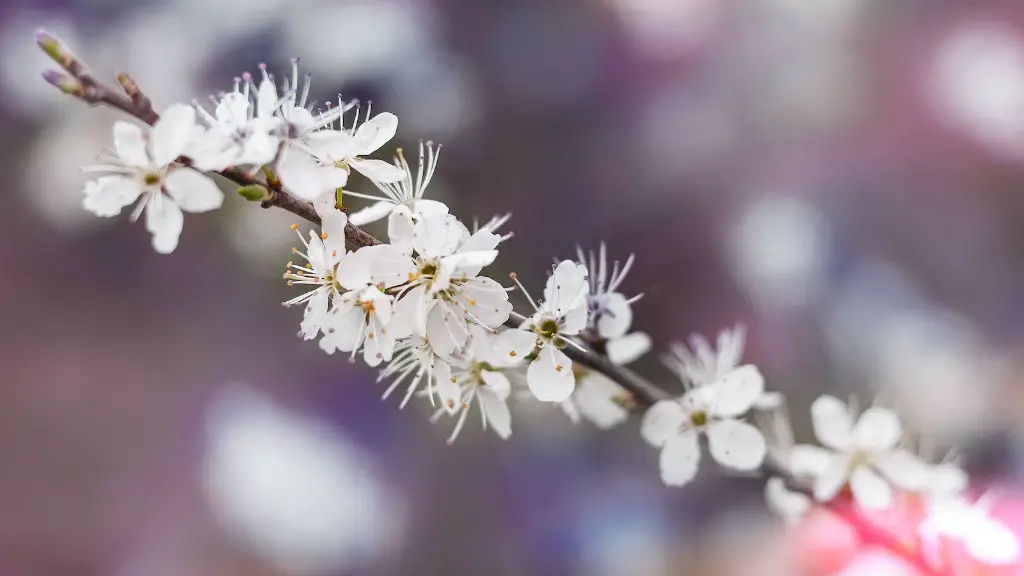Choose the Right Species
In order to grow a cherry tree from a branch, it is important to choose the right species of cherry tree. Some kinds of cherries are better suited to certain climates or are more prolific than others. For example, the sweet cherry is best grown in warmer climates, while the more hardy sour cherry is better for colder climates.
When selecting the species of cherry tree to grow, research what type of cherry tree will grow best in the local area. Consider factors such as sunlight, soil pH levels and the amount of precipitation expected in the specific area. It is also important to compare different types of cherries in terms of the taste, size, and other aspects to determine which one is desired.
Prepare the Site
Once a species of cherry tree is chosen, the site must be prepared for the tree to be planted. The soil should be tilled and compost added to enrich the soil. Additionally, be sure to remove any rocks or debris from the site.
The site of the cherry tree should also be in an area that receives plenty of sunlight. Sunlight is essential for cherries to produce and ripen fruit, and the tree should be placed in an area that gets at least six hours of direct sunlight a day.
Plant the Tree
When it is time to plant the cherry tree, it is important to be aware of the current weather conditions. Planting in cold and windy conditions can damage a cherry tree and prevent it from taking root. Wait for a day with mild temperatures and no rain, or cover the tree with a tarp or blanket if rain is expected.
Once the tree is planted, make sure the soil is firmly packed, and add a layer of mulch around the tree to help retain moisture in the soil. Once the tree is planted, water generously for the first few weeks to ensure it is well established and to prevent the tree from drying out.
Train and Prune the Tree
Once the cherry tree is planted, it needs to be trained and pruned to encourage a strong and healthy tree. This will ensure it produces high-quality fruit and will make it easier to pick the cherries when they are ripe.
Training and pruning is done by selecting a strong, central leader and pruning off any unwanted or competing branches. If the cherry tree is not trained and pruned properly, the fruit will not be evenly spread throughout the tree and the tree will be exposed to disease and pests.
Fertilize and Water the Tree
Fertilizing and watering the cherry tree is an important part of the growing process. Fertilizer helps to keep the cherry tree healthy, and it should be applied two to three times a year, in the spring, summer, and fall. Make sure to use a fertilizer with a balanced ratio of nitrogen, phosphorus, and potassium.
It is also important to make sure the cherry tree is getting enough water. In the first season, Be sure to keep the soil moist and water deeply to promote a strong root system. After the first season, the cherry tree still needs plenty of water, especially during hot weather or periods of drought.
Protect the Tree
Once the cherry tree is established, it is important to protect it from pests and disease. Inspect the tree regularly for signs of pests or diseases and remove or treat the infected areas immediately.
If the cherry tree is exposed to cold conditions, it is important to cover it with a tarp or blanket to prevent frost damage. If a extended cold front is expected, it is best to move the tree to an area with more protection, such as a garage or shed.
Harvest the Cherries
Once the cherry tree is established and healthy, it will be ready for harvesting. Cherries ripen in the late spring and early summer and should be picked when they are ripe.
To harvest the cherries, use a pruning shears to snip off the stems. Be careful not to damage the surrounding branches, as this can lead to diseases and pests. As the cherry tree matures and produces more fruit, harvesting may need to be done more frequently during the season.
Propagate Other Trees From the Branches
Once the cherry tree is established and producing fruit, additional cherry trees can be propagated from the branches. This is done by cutting a four to eight-inch section of the branch and either planting it directly in the soil or placing it in a container with a rooting medium.
If the branch section is placed in a container, it should be kept in a warm and humid environment until roots are formed, which takes approximately two to three weeks. Once the roots are established, the branch can be planted in the ground for a new cherry tree.
Address Pests and Diseases
It is important to protect a cherry tree from pests and diseases to ensure the tree stays healthy and produces the best fruit. Common pests that attack cherry trees include aphids, mites and caterpillars. In addition to these, there are also several fungal diseases that can infect cherry trees, such as black knot, brown rot, and powdery mildew.
In order to prevent pests and diseases, practice proper pruning techniques and inspect the tree regularly. If there are signs of any pests or diseases, treat them immediately to avoid further damage.
Provide Adequate Nutrition
To ensure the cherry tree produces the highest quality fruit, it is important to provide adequate nutrition. Regularly fertilize the tree with a balanced ratio of nutrients and feed it organic matter, such as compost, grass clippings, and other organic materials.
Additionally, provide the tree with plenty of water during the hot and dry months of the year. This will ensure the tree stays healthy and produces the best quality fruit.
Protect From Extreme Weather
It is also important to protect a cherry tree from extreme weather conditions, such as frost and wind. If there are frequent frosts in the area, then it is best to plant the cherry tree in a sheltered location or cover it with a blanket or tarp.
Additionally, make sure to provide the tree with a windbreaker or windbreak structure to protect it from wind damage. Windbreaks are mesh structures that break up the flow of wind and can help reduce the impact of high winds on a cherry tree.
Modify Soil To Increase Fertility
In order to increase the fertility of the soil and produce healthier fruit, it is recommended to modify the soil before planting the cherry tree. This can be done by adding organic matter, such as compost, to the soil.
Organic matter will help to increase the moisture and nutrient content of the soil, making it more fertile and suitable for growing cherries. In addition to adding organic matter, regularly fertilize the soil with a balanced ratio of nutrients to ensure the soil has all the necessary elements for optimal growth.


